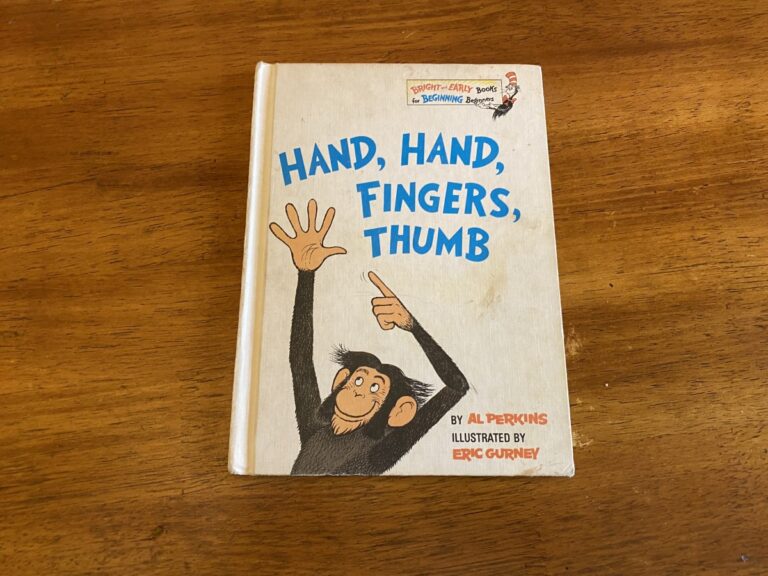Even though most kids can color at least a little and maybe even write their name by age 5, it doesn’t always mean they’re holding their pencil right. Most kids are ready to learn proper pencil grip by age 4-6. However, it still might take time for them to develop the fine motor skills needed to do it all the time. Below, we’ll take a look at strategies on how to teach a child to hold a pencil properly, including activities you can do to strengthen fine motor skills.
Understanding Pencil Grasp Development
Children learn how to grasp a pencil in stages that align with the development of their muscles. They learn to control the largest muscles closest to their body first (such as in the shoulders and arms). Then, they’ll learn how to control the smaller, more distant muscles like those in the finger and hand.
Before you can teach a child to hold a pencil correctly, it’s important that their arms and shoulders are strong enough and coordinated enough to support the proper movements. The stages that your child learns to grip a pencil in includes:
Fisted Grasp
This is the most common first grasp that your child will learn. They often grip the writing utensil with their fist, using their shoulder to push it across paper.
Palmar Grasp
Your child may develop this grasp as they learn to use the muscles in their hand and arm. Their shoulder is usually more steady and they use primarily arm muscles to move the crayon or pencil around. They’ll also hold the writing tool across their palm while writing and keep their elbow off to the side.
Five-Finger Grasp
By age four, your child might be using this grasp if they are on the road to developing proper pencil grip. Your child uses all five fingers and keeps their writing tool upright, using their wrist to move the utencil. You might even see a little finger movement. Even though this is often called an “immature grasp”, it’s actually right where you want your child to be around age 4.
Tripod Pencil Grip
The tripod grip is right where you want your child to be. While this usually happens around age 5-6, some kids take a little bit longer to develop the muscle strength and fine motor skills. It may look a little stiff at first, especially if your child is still using their wrist. They will eventually learn to primarily their fingers to make letters, numbers, and shapes.
Do Activities to Strengthen Fine Motor Skills
Fine motor skills are the way the smaller muscles in the fingers, hands, and wrists are used to do things. Your child needs fine motor skills to write while holding a pencil properly, to cut with scissors, and for so much more. In most children, fine motor skills develop naturally as they do things like color, make crafts, open small containers, cut with scissors, play with play doh, and do all those activities that encourage them to use their finger muscles.
Something that is especially helpful is exercises that strengthen the pincer grip. This is the grip that your child is going to use when they “pinch” the pencil between their thumb and forefinger. Some activities that strengthen this skill are picking up small objects with their thumb and forefinger (like sorting skittles, coins, or buttons) or using child-safe tweezers to pick things up. Something else you could try is breaking your child’s crayons down to a smaller size (like 1-inch) and challenging them to draw. With the smaller size, they have to pinch the crayon instead of using their fist.
Fine Motor Skills for Busy Kids
Some kids are a little too busy to enjoy tasks like coloring, sorting, or crafting. They would rather be doing something that lets them move around! For kids who prefer to stay busy, try to think of fun activities using their finger muscles. Outside, encourage them to play with sidewalk chalk or squeeze a spray bottle filled with water. You can also let them help in the kitchen. They can use kid-safe scissors to cut some types of veggies like green peppers, help open containers, and stir batter.
Fine Motor Skills Your Child Can Use Every Day
As your child learns to do more things, there’s a lot of ways they’ll use their fingers every day that improve fine motor skills.
Self-dressing skills like using buttons and snaps, manipulating zippers, tying, Velcroing, or strapping shoes, and using a belt all use fine motor skills. Hygiene skills like going to the bathroom, brushing hair, and brushing teeth also require these skills.
You can also encourage your child to be more independent when they eat. Holding utensils, opening bags, and even helping prepare food helps work the muscles in the fingers.
Use the Alligator Trick
The Alligator Method is a great way to help kids remember the proper way to hold a pencil. Start by having them hold their hand in the shape of a mouth. They should have four fingers lined up next to each other on the top and their thumb on the bottom. Have them open and close their fingers like a mouth.
Explain that the alligator is hungry and wants to eat the pencil. When they close the “mouth”, the pencil should be pinched between the thumb, index finger, and middle finger. It should also be resting on the skin between their thumb and index finger.
Then, the alligator curls his lips because he doesn’t like the taste of the pencil. (Show your kids how you would pucker if you had eaten a lemon). Then, help them push their fingers back toward the erase on the pencil. Their fingers should be bent to give them better control over the pencil.
Have Them Rest Their Hand
Something else that encourages your child to use their finger muscles is having them rest their hand. When a child holds a pencil improperly, they rely on muscles other than their fingers to move it across paper. They may use their wrists, arms, or even shoulders instead. By having your child rest his or her pinky on the paper, they have to use their fingers to move the writing utensil around.
Consider Writing Aids
Writing aids are designed to help your child learn to position their fingers on the pencil when it doesn’t come as naturally.
Something like the Original Pencil Grip is molded with three divots that your child rests their fingers in. It also is a little bit chunkier than a pencil with the grip, which can make it easier for a child whose finger muscles are still developing because they don’t have to pinch them as close together to have control over the pencil.
Another option would be a thicker, chunkier pencil that works for the same reasons. For example, the Tri-Write Pencil is a little bit thicker and it has a triangular shape that encourages proper pencil development.
Encourage Play Time
There are also tons of ways that you can have your child build fine motor skills while playing. It also gives you a chance to bond, especially when you’re working together.
Building with Legos is a great way to encourage the use of finger muscles (and creativity). Puzzles, building train tracks, and even just racing cars or playing with dinos as they walk around requires fine motor skills.
Playing with dolls, manipulating their limbs, and dressing them also works the finger muscles. You could also play with horses and move them around.
Finally, when your child does have time on electronics, you can encourage them to play educational games. If they are using a mouse or working with a stylus, it helps them work their finger muscles.
FAQs About How to Teach a Child to Hold a Pencil
When should my child be able to hold a pencil correctly?
The earliest most children learn to hold a pencil correctly is around age 5-6. While they can write and color before this, it may be more tiring because they’ll use larger muscles (like their shoulder, arm, or wrist) to push the pencil around. Some kids do take a little longer to learn to hold the pencil the right way. It’s something that usually happens by working the finger muscles and continuing to practice. You can talk to their pediatrician about seeing an occupational therapist if you are concerned your child isn’t learning the skill by first grade.
Why is proper pencil grip important?
When a child doesn’t hold a pencil correctly, they have to work extra hard to make letters and numbers. This makes them tire out more easily when doing assignments. It is also harder to write, so handwriting is usually less legible. In kids, you may also notice that they color outside the lines more and have difficulting tracing shapes, letters, or numbers.
Is there more than one type of pencil grip?
The most widely used (and proper) pencil grip is the tripod grasp. However, there are a few other functional pencil grasps that are modified versions of the tripod grip. These include the dynamic tripod, lateral tripod, adapted tripod, dynamic quadrupod, and static quadrupod grasps.
Final Word
The best advice for how to teach a child to hold a pencil is to be patient. Most kids develop this skill naturally with just a little guidance over time. You can help by encouraging your child to do activities that strengthen their fine motor skills like playing with play doh and cutting with scissors. Having them take care of hygiene tasks like brushing hair and teeth and dressing gives them a chance to practice, too.






